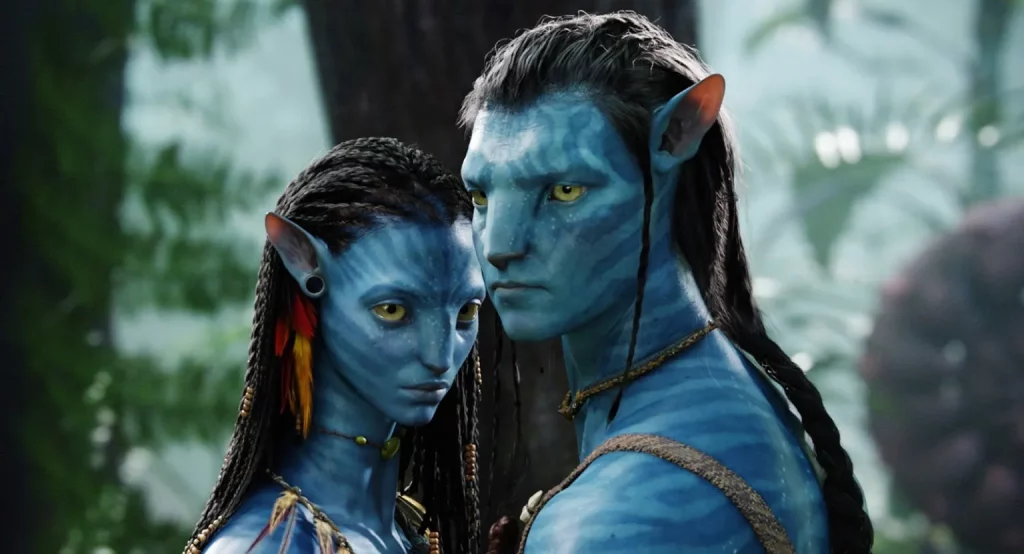This is a question that came to my mind from the moment I started a course in Cultural Studies.
Honestly, I’m not a big fan of movies. I mean, yes, I like them, but I easily get bored when watching them. Then I understood why. Before starting the course, I used to watch movies passively, without thinking too much — just to spend some time.
Then I was asked to do a critical analysis. At first, I didn’t know where to start. It was a completely different approach to cultural productions compared to what I was used to.
Well, then I started watching movies with a critical eye, trying to understand the hidden meanings behind the scenes. This made me reflect a lot, particularly on European and American productions.

How have such productions shaped and built our idea of “us” and “the others”?
Since my studies focus on Latin America, I would like to explore this question in relation to Indigenous people. How have they been represented in this medium? What image do we have of “them”?
Let’s just think about the movie Avatar. It reproduces an image of Indigenous culture as a community in close contact with nature and its own traditions. This cosmovision, which is partly based on reality, reinforces Western stereotypes of that culture. Western countries tend to portray these images by emphasizing the idea of “them” being different. Yes, maybe they are — but we are all different from each other, and this shouldn’t result in the marginalization of “the other.”
What I’m trying to say here is that we all grow up watching movies, often passively. And if we don’t think critically, we fail to realize how much they shape our knowledge and understanding of the world.
In this regard, Indigenous communities in most productions have been portrayed as inferior, uncivilized, and often pushed into the background. In some movies, like Avatar, they are central but still reproduced as “different.” In others, they’re invisible. So my question is: when I was younger and didn’t know much about them, what was the image that came to my mind when thinking about Indigenous people? Well, the same one I saw in those productions — individuals without clothing, living in nature.

Here lies the answer to my question: How do movies shape the message?
They spread a message that reproduces the ideals of the society that produces them. Most famous productions are American; therefore, they portray images that reinforce Western stereotypes of communities considered “inferior.” If we watch those movies without thinking critically, we simply absorb those concepts and reproduce them in our daily lives. But if we go deeper, watching documentaries or Indigenous-made productions, we realize the image is completely different.
So, the message is shaped both by producers and audiences. It’s what Cultural Studies defines as encoding and decoding. The producer encodes a meaning that reflects their ideals, while the audience can either absorb that meaning or interpret it differently.
Therefore, I just want to conclude by saying: we always need to be critical; otherwise, we might one day realize that our knowledge has been constructed by others. What works for me is trying to find an opposite view — exploring different perspectives of the same image allows me to see the bigger picture instead of absorbing only the one spread by the society I live in.
Because in the end, most of the world issues we discuss today — such as inequality, violence, and human rights — have also been fueled by movie production.
So people, watch out — and let’s be critical!


Wow, what an interesting take. It is wild how clearly some of the popular films that you discuss reflect the “othering” of indigenous groups that has occurred throughout history. It really makes you wondering how these films perpetuates such problematic idealogies. In terms of shaping the message, your discussion of Avatar really shows how films not only reflect modern understandings of certain concepts, but also influence modern understandings of certain concepts. These films are clearly influenced by the alienisation of indigenous people, but as you say, also influence how society views indigenous people as alien.
I am from Australia, where treatment of Indigenous people is really poor. While I am very passionate about the rights of Indigenous Australians, I have never really considered the way the media (specifically movies) portray Indigenous people and how these ideas can be internalised even in the modern day where you would think we would be too woke to be influenced by such nonsense. I admit I think this is partly because, similar to you, I’m not really a movie watcher. But I will certainly start thinking more critically about how movies shape the message after reading your blog post.
I never thought about this! I do like to think that I have a understanding of movies and I always try to figure out what the director may have meant when he put a specific scene together, but I never thought about what it really pictures. I think sometimes I need to take a step back and not believe everything I see in a movie. I know that most movies are fiction, but that does not mean that what they show isn’t real life, they can really play into stereotypes.
I think you make a really good point describing how we are shaped by movies. I, as a film student, am really fond to hear that you began to look more critical at American and European movies. And I think you picked the perfect movie to show how these ideals are brought to us without us knowing when we just look at it passively. Its also a good message at the end, waking everybody up and saying that sometimes being more critically of what we consume is needed.
You mention your studie focusses on Latin America, I can suggest looking into Towards a Third Cinema manifesto from Fernando Solanas and Octavio Getino. These are Argentine filmmakers who wanted to go against the way of Hollywood filmmaking, and share the problems America caused in Latin America. This was a critical countermovement, and indiginious cinema is also part of this Third cinema movement.